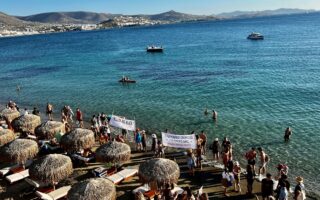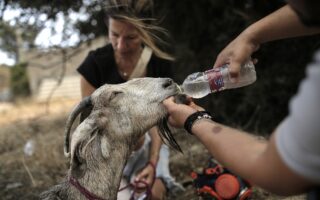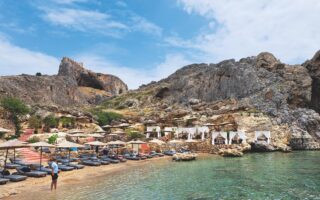Nature restoration: The bottom line

When we think of Nature, we think of luscious green forests, mountain hikes, long summer swims in clear blue waters or maybe the sound of the rain on leaves on a fresh autumn day. We think of cherished moments with our loved ones, or the time we went for a walk in the nearest spot to restructure our thoughts. But are these precious moments to be taken for granted? And is the Nature around us doing well? I think we all know the answers to these questions.
Protecting the nature we have, is not enough to bring nature back into our lives. 80% of EU habitats that have been assessed are in a poor state, despite 30 years of legislation to protect them. Cities are heating up, farmland is drying out, and in some countries forests already emit more carbon than they absorb. Biodiversity is declining rapidly, as are the free services provided by healthy ecosystems – like water filtration, pollination, and soil productivity. The associated economic loss amounts to double-digit billions, every year.
As the effects of climate change become rapidly more pronounced in Europe, there is a growing realisation that if we want to protect ourselves and the economy from the worst impacts, we need our nature to be healthy. That’s a rock-solid fact, supported not just by the climate experts of the IPCC, but also by data-driven economists, including the European Central Bank. So, to reverse biodiversity loss, there is a need to go beyond nature protection and to be bold on nature restoration.
In 2022, the European Commission adopted a proposal for the first-ever European nature restoration law. The initiative combines a general, long-term objective to restore nature on the EU’s land and seas with binding restoration targets for specific habitats and species. After several rounds of discussions in the last months during the legislative process, a provisional deal was finally struck between the European Parliament, the EU Member States and the European Commission. It constitutes a clear political signal that the EU remains on the right track for a sustainable future.
The final text, which will now need to be formally endorsed by the European Parliament and the EU Member States, is a landmark that will allow us to heal nature so that it can remain our most precious ally in the fight against climate change. Because this is the essence of nature restoration: we don’t lock nature away, we integrate it in cities, businesses, farms and residential areas. We live with and by it, we take care of it, and in return, we benefit from the ecosystem services it offers for generations to come.
The implementation of the law, once in force, will gradually bring about significant change in our perception of nature, and its value for society and for the economy. The business case for healthy nature has always been clear: The World Economic Forum has established that over half of global GDP – some EUR 40 trillion – is linked to nature, and that addressing the nature crisis could generate 395 million jobs by 2030. The OECD estimates that the costs of inaction on biodiversity loss are equally high. Between 1997 and 2011, the world lost an estimated EUR 3,75-19 trillion per year in ecosystem services owing to land-cover change and EUR 6-10 trillion per year from land degradation. Now the real work needs to start, which is to translate this potential into the micro-level bottom line, into direct benefits for all of us and our society at large, including farmers, fishers, foresters, asset managers, bankers, and for the many small businesses that depend on nature.
Let’s take the example of pollinators: wild pollinators such as wild bees, hoverflies, and butterflies have declined dramatically in recent decades. Yet, around 80% of agricultural crops and almost €5 billion of the EU’s annual agricultural output depend on pollinators, so it would be disastrous for food production if we do not stop the decline of pollinators. Restoring the range of ecosystems where pollinators can thrive is essential to reverse their decline and ensure benefits to farmers. This is just one of the multiple benefits of restoration and there is already a lot of progress and opportunities to improve nature around us in all corners of Europe.
Greece is particularly vulnerable to the negative impacts of climate change. Nature restoration can contribute to climate mitigation and adaptation, as well as additional social and economic benefits. Greece has a large range of advanced experience in restoring ecosystems. Greece’s National Reforestation Plan aims to restore degraded forest ecosystems to halt biodiversity loss and protect infrastructures from natural disasters.
Athens’ Climate Action Plan and Resilience Strategy aims to restore urban green ecosystems to cope with climate change and urban heatwaves. Riparian forest restoration and riverbank protection of the Evrotas River aims to improve resilience to floods and to improve water quality for farmers. Greece is also implementing coastal ecosystems restoration projects to reduce and prevent coastal erosion, including a program to restore seagrass meadows in the Amvrakikos Gulf. These solid examples showcase how much is already happening on the ground and inspire our next actions.
We have no future without nature. Nature cannot be a luxury. Our farmers, foresters and fishers depend directly on it and need adequate support. With the new Nature Restoration Law, as well as other tools like the Common Agricultural Policy, we ensure that they get the support they need. Restoration is a positive story, a cause for celebration. Because it is our hope and best chance for our future to be as bright as the memories we have and hold dear.
Virginijus Sinkevicius is the EU’s Environment Commissioner.





